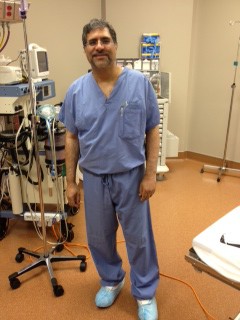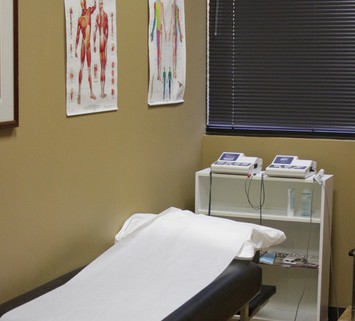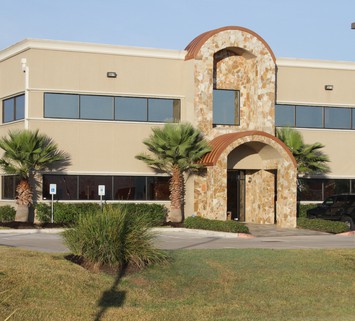The spine is one of the most influential bone structures in the human body, with a series of vertebrae separated by discs that allow the spine to twist and bend without causing damaging friction between vertebrae. When those discs become worn down or damaged through injury or natural disc degeneration, however, the vertebrae affected by the damaged disc (and the nerves surrounding them) are at risk. When this happens, your doctor may recommend disc replacement surgery to improve your pain levels and overall quality of life.
Whether the damage is caused by a disc herniation (injury) or lumbar degenerative disc disease, your doctor will typically inform you that physical therapy may help with short-term pain relief. They will also go over any other more conservative treatment options with you and encourage you to try them before resorting to surgery. However, operative treatment is often necessary for long-term relief, especially for degenerative cases that will inevitably affect the whole disc.
What is Disc Replacement Surgery?
There are two types of surgical treatments for a damaged disc: artificial disc replacement and spinal fusion surgery (also called ACDF surgery, or anterior cervical discectomy and fusion surgery). The former involves replacing the damaged disc with a synthetic material that mimics the composition of the actual disc. The latter involves taking a bone graft (typically from the neck) and using that graft to fuse the two affected vertebrae together.
In both surgeries, the damaged disc is removed and replaced, but spinal fusion surgery typically leads to more restricted movement, and its success rate is a bit lower due to the number of additional factors that can affect recovery. Some will reject the bone graft, others will have a perfectly healed surgical site yet still be in significant pain, and others still will have complications requiring further surgery.
Is Disc Replacement Surgery Safe?
The Food and Drug Administration (FDA) approved disc replacement surgery as an alternative to spinal fusion in 2004. Since then, several newer, safer, and more effective methods have emerged to make artificial disc replacement a preferred method thanks to it’s rising success rate and the fact that it provides a greater range of motion to the patient’s post-recovery.
That being said, artificial disc replacement is not going to be the right choice for everyone. The FDA recommends that people with the following conditions not have an artificial or total disc replacement, as the surgery could potentially do more harm than good:
- Spondylolisthesis
- Osteoporosis
- Notable changes in the facet joints of the back
- Pregnancy
- Spinal fracture (specifically vertebral body fracture)
- Spinal tumor
- Spinal infection
- Morbid obesity
- Allergy to any component of the synthetic material used in the replacement disc
- Chronic steroid use
- Autoimmune disease
- Back pain stemming from numerous vertebrae rather than one or two
If you do fall under any of the categories above, you may either need to avoid surgery altogether or opt for the spinal fusion option.
Additionally, disc replacement surgery is not minimally invasive, requiring more access to the spine in order to complete the surgery. Therefore, there are more risks involved with infection, and there is still a potential risk of the new disc slipping or dislodging from a failed surgery. It’s important to discuss all pros and cons of spinal surgeries with your doctor before making a decision.
Is Disc Replacement Surgery Painful?
Like all joint replacements, disc replacement surgery can have a painful recovery. However, if you’re receiving such a surgery, you were already in a great deal of pain for upwards of six months, and the recovery pain will seem like a small price to pay for long-term pain relief. What’s better, disc replacements are often less painful than spinal fusions because they don’t require the healing of the bones themselves, so your recovery will likely be faster than it would from other spinal surgeries.
After surgery, you’ll be encouraged to stand and perhaps take a few steps within as little as 24 hours. From there, a physical therapist will show you small stretches and exercises you can do to further the healing process and improve your range of motion throughout recovery.
What is the Success Rate of Disc Replacement Surgery?
A 2015 FDA-approved study of artificial disc replacement surgeries reported a success rate of 87.5%, and other studies have generally fallen within the same area. However, it doesn’t hurt to ask your surgeon for their personal success rate, along with how many of these procedures they’ve done. It’s important to be comfortable with your surgeon prior to making any decisions, as their work will impact your life in a huge way.
How Long Does It Take to Recover from Disc Replacement Surgery?
Your recovery time from a disc replacement procedure will depend on where the replacement took place. Cervical (neck) and thoracic (upper back) replacements may take significantly less time to heal than lumbar (lower back) disc replacements. With the former, there’s often a noticeable improvement in recovery pains between the first few days, and full recovery often takes place within a few weeks. Lumbar disc replacements will usually need a couple of months for full recovery, but the pain relief both during and after recovery are typically comforting to patients during this time. Physical therapy and pain medications may be recommended to improve quality of life during this time frame.
Since most of us will experience back pain at some point in our lives, it’s important to know what kinds of conditions and injuries may affect our pain levels long-term and what options are available to us for treatment. Surgery is often a last resort thanks to the risks that naturally come with surgery in general, but artificial disc replacements and spinal fusion surgery have been such common surgical procedures that they’re constantly being improved upon. If you’ve been experiencing debilitating back pain for six months or more and nothing seems to help, consult with your doctor about the benefits of spinal surgery and see if artificial disc replacement is the right option for you.
Now that you know more about disc replacement surgery, find permanent relief with help from Texas Spine Center. Dr. Siddiqi and his staff are dedicated to their patients and offer personalized care options to treat each individual’s specific pain. Dr. Siddiqi is skilled in both laser spine surgery and minimally invasive spine surgery in Houston and will offer the correct treatment for you.



